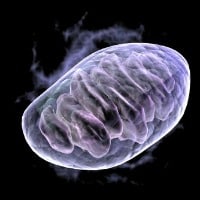A series of experiments involving mitochondria were conducted by Xiaodong Wang of the National Institute of Biological Sciences based on investigating whether there may be a way to prevent the decline of neurological conditions by stopping damage within the mitochondria, which involved examining a pathway that leads to programmed cell death when the mitochondria are damaged.
“Mitochondria in mammalian cells play many functional roles in maintaining the well-being of the organism, acting as the major bioenergy source, as well as a signaling compartment that can trigger apoptosis and inflammation,” Wang wrote in Proceedings of the National Academy of Sciences.
Mitochondria are an organelle, which is a constituent in a mammalian cell with the specific job of energy production, with its own DNA and it is the only organelle with DNA other than the nucleus. Wang with a team of researchers were able to isolate a protein that blocks apoptosis and protects mitochondrial integrity as well as function which according to the team results in preserved neurological function.
The isolated protein has been dubbed Compound R6, not only does it prevent apoptosis, but the activation of autophagy; blocking apoptosis allows damaged cells to recover and regain some of their functions.
Compound R6 was revealed to prevent apoptosis through inhibiting the major signaling pathway mTOR, to supply protein to animals with cerebral ischemia, producing neuroprotective effects that were dose dependent: the more of the compound there was, the better the brain was protected.
“Given increasing appreciation that mitochondrial damage affects the etiology of several common and devastating neurodegenerative diseases, Compound R6’s ability to pass the blood-brain barrier and confer strong anti-apoptotic effects should encourage preclinical and medicinal chemistry research efforts,” Wang reported, noting, “perhaps even extending—as with other known mTOR inhibitors—into evaluation of possible anti-aging effects.”
MItochondria are the powerhouse of cells and they are associated with overall health and vigor; a single human muscle cell can contain 5,000+ tiny mitochondria. These tiny powerhouses are subject to damage in age related diseases and they also decline in the natural process of aging. When they declined or fail in the pancreas it can result in type 2 diabetes, which is common among older populations; and damage/loss in nerve cells is associated with dimmer vision and mind fog.
This research stems from a series of experiments that have revealed a link between the mitochondria and health of nerve cells. Compound R6 may offer potential new paths to the amelioration of damage to the organelle and rescue severely injured nerves.
This is not the team’s only major discovery, “Previously, we reported the discovery of a small molecule, Compound A, which blocks dopaminergic neuron death in a rat model of Parkinson’s disease,” Wang said.




